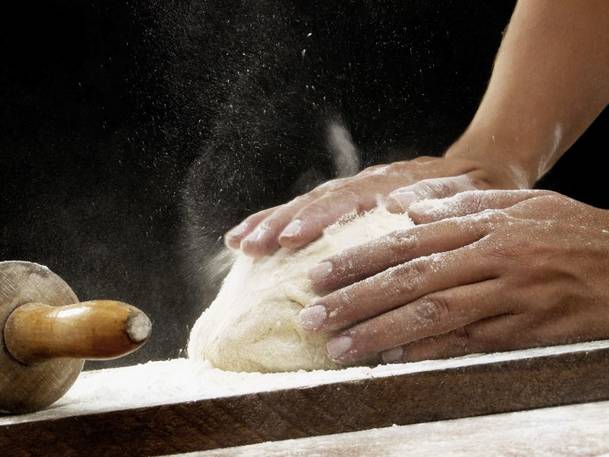


The art of breadmaking may have been born in Egypt and later reached Greece and Rome, where people depended on the cultivation of grains for nourishment.
The Roman national dish was polenta made with farro, a coarse grain. Near Porta Maggiore in Rome, there still stands an ancient monument built to commemorate bakers, with a tower of three large cylinders where people used to leave their bread to rise. The cylinders are stacked vertically and horizontally on top of one another, and above them a fresco depicts the various treatments a grain undergoes to become bread.
The Romans cooked their bread in public ovens as well as private ones, like those found in the houses of Pompeii, and the first bakery was opened in Rome in 15 BC.But it was in medieval times that bread took on a prominent status due to its central role in the Christian sacrament. Since then it has been a staple on every table in Italy. But what kinds of bread do we eat and how do we go about making them?
Industrial vs artisanal bread
Most people today eat industrial bread that is treated with additives and preservatives to withstand the processes of freezing and packaging for large-scale distribution.
Fresh artisanal bread is mainly made with local flour without additives.
Considering the time and work that goes into making artisanal bread, it’s clearly more expensive than industrial bread. But artisanal bread is more natural and better quality. For example, it’s more easily digested and smells better.
In fact, According to the Italian Federation of Bakers, or FIPPA, 75% of bread consumed in Italy is artisanal bread. FIPPA has created a set of regulations for labeling real artisanal bread.
The quality seal called “Bollino Bianco” [2] guarantees that a particular kind of bread has been “made in a continuous process without interruptions to freeze, deep-freeze or prolong the shelf-life of primary ingredients for baked goods.”
Do it yourself, but...
You can certainly try baking your own bread at home, given the basic ingredients involved (flour, yeast, water and salt), but there are a few things to keep in mind if you want to make real “Italian” bread.
The main ingredient in bread is flour. Flour is made with kernels of wheat or ground grain. The most widely available grain, flour is mostly cultivated in the central and northern regions of Italy, where it is categorized according to how finely the flour has been ground.
“00” flour is the finest ground white flour (similar to all-purpose or pastry flour in America) with no bran. “1” flour and “2” flour contain increasing amounts of bran.
Remember, however, that the lack or near-lack of impurities in flour means that the grain is depleted of main nutrients.
It might seem strange, but the most important ingredient for making artisanal bread is yeast. In particular, “starter yeast,” considered the soul of bread.
“Starter yeast” gives bread its shape and taste, whether it’s made with a leftover bit of dough or dough made with flour, water and sugar that have been mixed together and fermented spontaneously.
Once upon a time, natural yeast was considered a precious commodity, and bakers would set aside a part of each day’s dough, which they would refresh by removing the outer layer of crust and re-kneading it with water and flour.
This kind of yeast goes by many names in Italy: pastella acida, pasta (or lievito) madre and, around Cuneo in Piedmont, Alvà, which is conserved and used to this day.
Last but not least, if you are serious about breadmaking you should never forget water and salt. You can distinguish all kinds of Italian bread by these two ingredients! Water is essential. Good bread is one hundred parts flour to forty or fifty parts water. Salt is also indispensable.
However, some kinds of bread are traditionally made without salt, like Tuscan bread or Umbrian bread from Terni.
Source URL: http://test.iitaly.org/magazine/dining-in-out/articles-reviews/article/bread-alone
Links
[1] http://test.iitaly.org/files/wpanemain1402349671jpg
[2] http://www.bollinobianco.it/